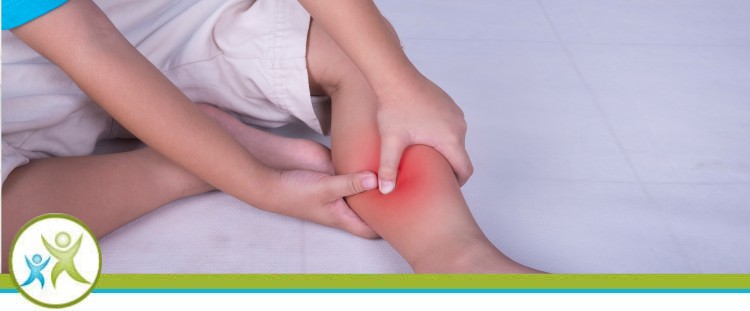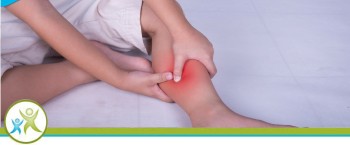Pediatric Sprains and Strains Treatment in Kirkland, WA
Pediatric sprains and strains involve injuries to the ligaments or muscles, commonly occurring during physical activities or sports. Dr. Basma Raees MD at Evergreen Pediatrics highlights the importance of proper diagnosis and treatment to reduce pain and promote healing. Rest, ice, compression, and elevation (the RICE method) is often recommended, along with a tailored rehabilitation plan to ensure a full recovery and prevent future injuries. For more information, contact us or request an appointment online. We are conveniently located at 12911 120th Ave NE Suite B10, Kirkland, WA 98034.


Table of Contents:
How do you treat a strained muscle in a child?
How do you prevent sprains in children?
How long does muscle strain last in kids?
How do you know if your child has a pulled muscle?
Children frequently deal with muscle strains, often resulting from their active lifestyle and participation in sports and recreational activities. A muscle strain or a muscle pull occurs when a muscle is overstretched or torn due to sudden or excessive force. Symptoms may include
pain, tenderness, swelling, difficulty moving the muscle, cramps, spasms, and muscle weakness.
Our first recommendation in treating a child’s strained muscle is rest. This allows the muscle time to heal and prevents further damage.
Depending on the severity of the strain, crutches or a wheelchair may be necessary to minimize weight-bearing on the injured muscle.
We also advise applying ice to the injured area to reduce swelling and pain for 15-20 minutes every 2-3 hours during the first 24-48 hours post-injury, which can be effective. If swelling continues, consider wrapping the area with an elastic bandage and keeping the limb elevated.
Once the initial 48 hours have passed and the pain and swelling have reduced, we suggest starting gentle stretching exercises to improve range of motion and reduce the risk of re-injury.
However, if the pain is severe, does not improve with home treatment, or if there is significant swelling, bruising, or difficulty moving the muscle, please contact us at Evergreen Pediatrics immediately. Additionally, if the child experiences numbness or tingling in the affected limb, or instability in the muscle, seek our professional medical advice. We can provide appropriate treatment, which may include physical therapy or other interventions.
Prevention is essential in avoiding muscle strains. We encourage children to warm up before exercise or sports activities, use proper techniques when lifting weights or engaging in physical activities, gradually increase training intensity and duration, and regularly perform stretching and flexibility exercises.
Preventing sprains in children is a priority. We recommend regular physical activity to help strengthen your child’s muscles and improve their flexibility, significantly reducing the risk of sprains. Activities such as swimming, cycling, or gymnastics are excellent for this purpose. It’s important, however, to ensure these activities are age-appropriate and conducted under supervision in a safe environment.
Proper nutrition plays a significant role in preventing sprains. A balanced diet rich in calcium and vitamin D for bone strength, combined with protein for muscle growth and recovery, is essential. Encourage your child to stay hydrated as it helps lubricate the joints, reducing the risk of sprains.
Safety should always come first. Make sure your child wears the correct gear for their activities. Shoes should offer good support and fit correctly. If your child is involved in sports, ensure they use appropriate safety equipment such as pads, helmets, and guards.
Teach your child about the importance of warming up before and cooling down after exercise. These routines help prepare the muscles for physical activity and reduce the risk of injury. Your healthcare provider can also advise on proper body mechanics to help prevent excessive strain on joints and ligaments.
If your child has flatfeet, they may be more prone to sprains. You may need to be referred to a podiatrist for appropriate treatment options.
Encourage activities that strengthen the muscles around the joints, such as calf raises, squats, or swimming. Adequate rest and recovery time is also crucial, allowing the body to repair any minor damage from exercise and reducing the risk of future sprains.
Muscle strains are common, especially among children who participate in sports or physical activities. The healing time of such injuries can vary, depending on factors like the severity of the strain, the child’s overall health, the body’s healing rate, and the care and treatment provided.
• Mild strains involve a slight muscle tear with minimal pain and no major strength loss, healing within days to a week with RICE therapy. Children can usually return to activities after a few days but should avoid exacerbating the injury.
• Moderate strains feature partial muscle or tendon tears, causing noticeable pain, swelling, and reduced strength, typically healing in two to four weeks. Treatment may include RICE, over-the-counter medications, and physiotherapy, with possible use of crutches or a brace.
• Severe strains, involving complete muscle or tendon tears, result in intense pain, swelling, and inability to use the muscle, often taking weeks to months to heal. Treatment might include immobilization, extensive rehab, and possibly surgery.
Active children can face more potential risks of a pulled muscle while playing, including the occurrence of pulled muscles or muscle strains. Our team of pediatric experts is well-equipped to identify the signs of a pulled muscle in your child and provide effective treatment options.
Key symptoms such as pain, swelling or bruising, muscle weakness or stiffness, unusual muscle movement, and a popping sensation at the time of the injury are all indications that your child may have strained a muscle. These symptoms can also indicate other medical conditions, which is why it’s crucial to consult with our healthcare team if you suspect your child has a pulled muscle. Our pediatric specialists will ask about your child’s symptoms, level of activity, and medical history, and perform a thorough physical examination.
We believe in prevention and encourage parents to guide their children to warm up before exercise and cool down afterward with gradual stretching and relaxation exercises. Ensuring your child stays hydrated and does regular stretching exercises can also prevent muscle strains. Encourage your child to move smoothly and gradually during activities and pay attention to any signs of fatigue or overexertion, encouraging rest when needed.
At Evergreen Pediatrics, we’re here to help your child stay healthy and active. For more information, contact us or book an appointment online. We serve patients from Kirkland WA, Seattle WA, Shoreline WA, Lake Forest Park WA, Kenmore WA, Woodinville WA, Mountlake Terrace WA, Woodway WA, Edmonds WA, Lynnwood WA, Bothell WA and Lake Washington WA.

Additional Services You May Need
▸ Newborn
▸ Pediatric Health Testings
▸ Sick Child
▸ Well Child
▸ Annual Physicals
▸ Sports Physicals
▸ Immunizations
▸ Women’s Health

Additional Services You May Need
▸ Newborn
▸ Pediatric Health Testings
▸ Sick Child
▸ Well Child
▸ Annual Physicals
▸ Sports Physicals
▸ Immunizations
▸ Women’s Health





